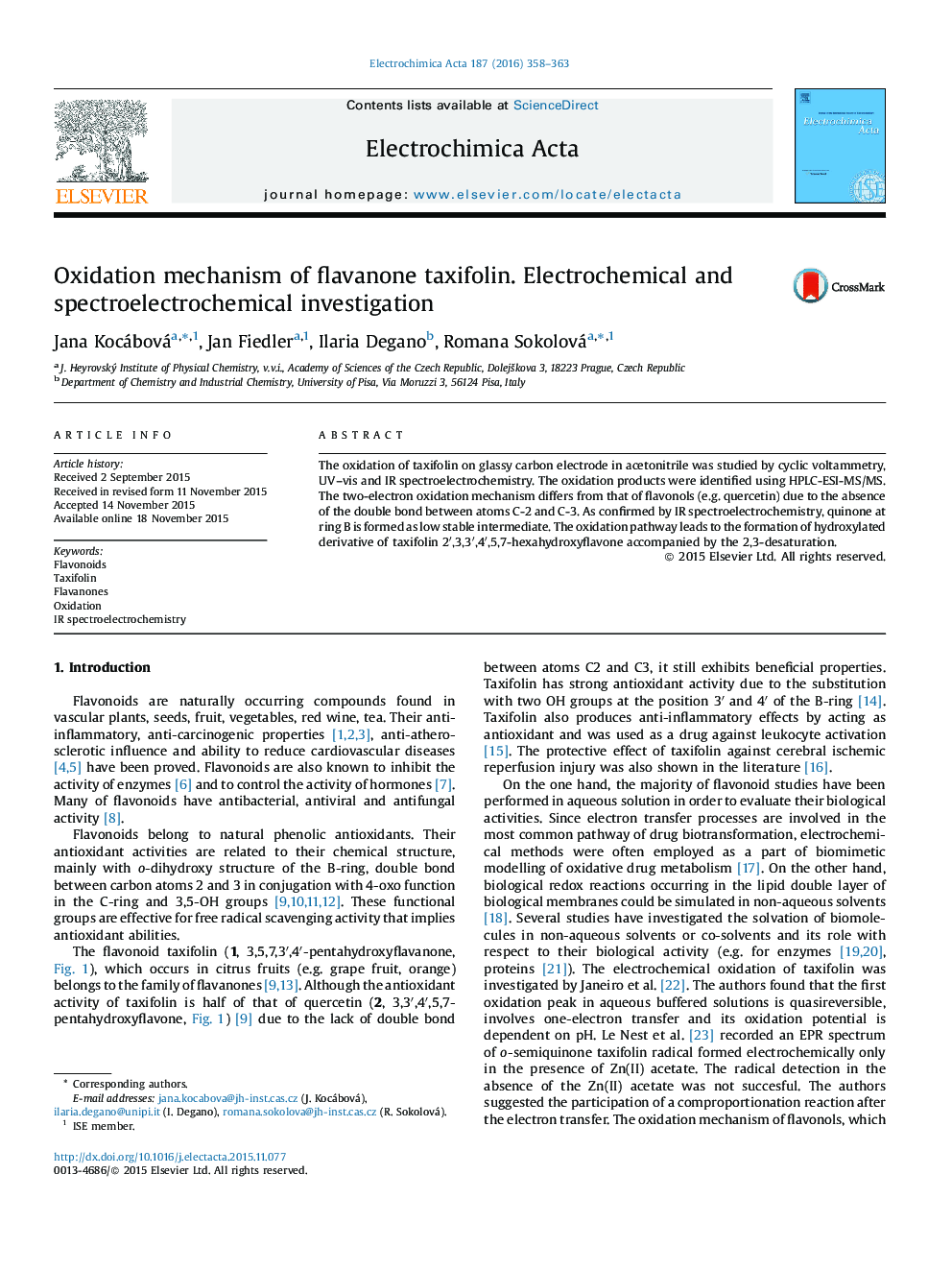| Article ID | Journal | Published Year | Pages | File Type |
|---|---|---|---|---|
| 183279 | Electrochimica Acta | 2016 | 6 Pages |
•The oxidation mechanism of flavanone taxifolin was proposed.•The oxidation is specific and differs from oxidation of flavonol quercetin.•A benzofuranon common for quercetin is NOT the taxifolin oxidation product.•The absence of C2–C3 double bond is crucial in taxifolin oxidation.
The oxidation of taxifolin on glassy carbon electrode in acetonitrile was studied by cyclic voltammetry, UV–vis and IR spectroelectrochemistry. The oxidation products were identified using HPLC-ESI-MS/MS. The two-electron oxidation mechanism differs from that of flavonols (e.g. quercetin) due to the absence of the double bond between atoms C-2 and C-3. As confirmed by IR spectroelectrochemistry, quinone at ring B is formed as low stable intermediate. The oxidation pathway leads to the formation of hydroxylated derivative of taxifolin 2′,3,3′,4′,5,7-hexahydroxyflavone accompanied by the 2,3-desaturation.
